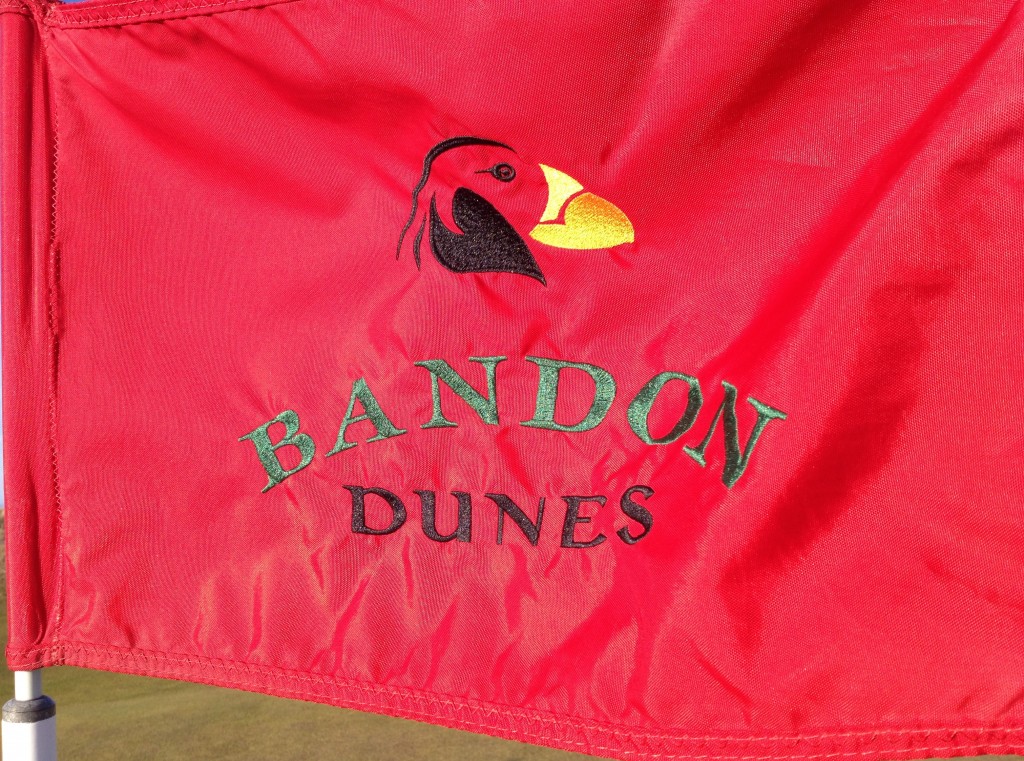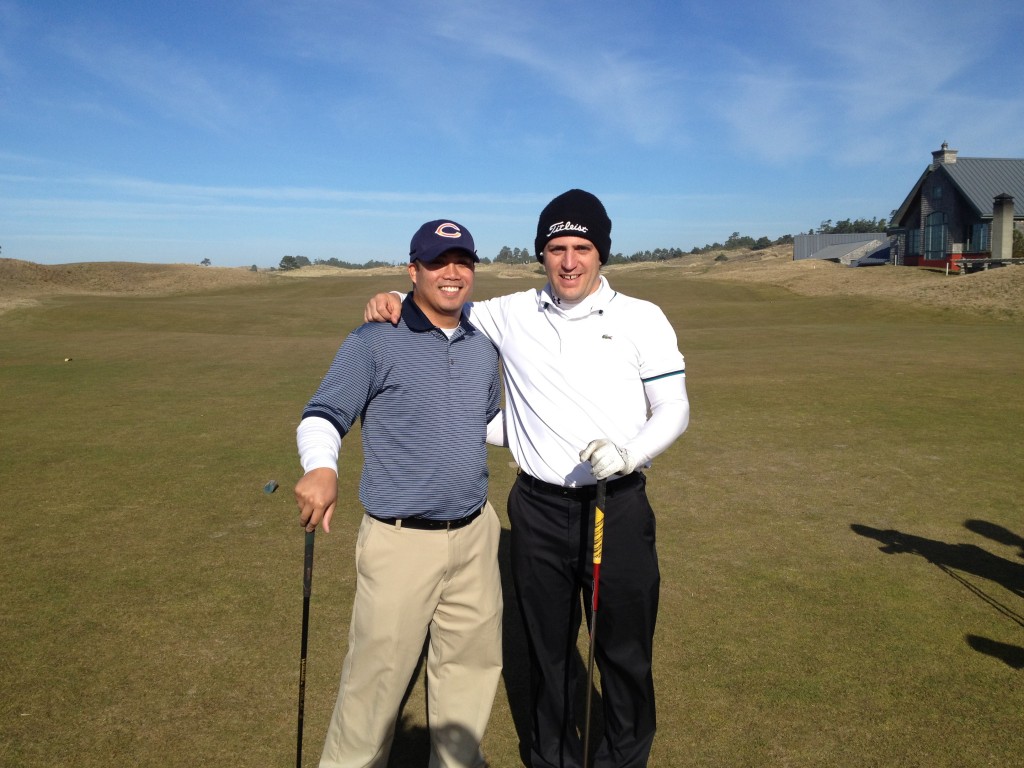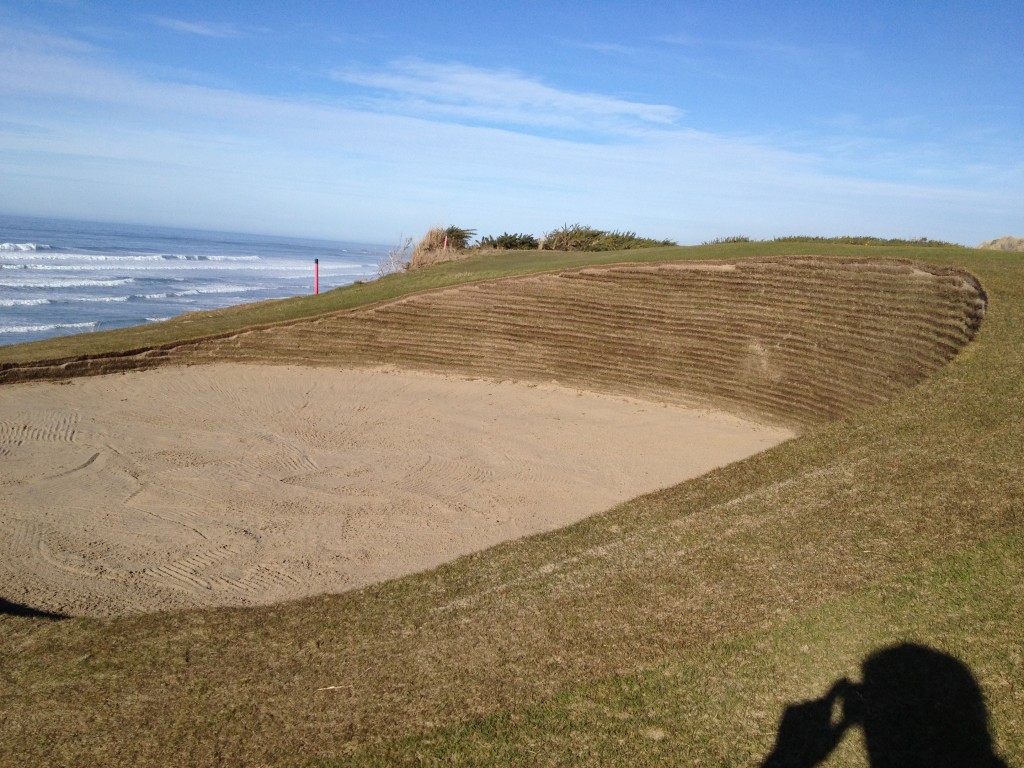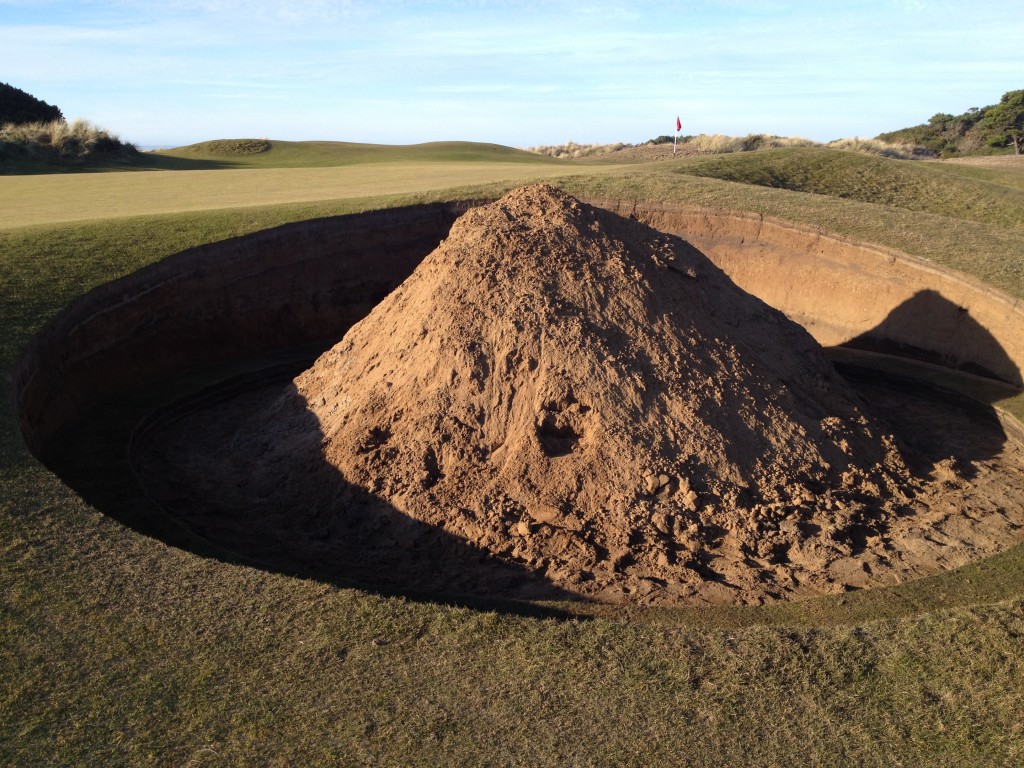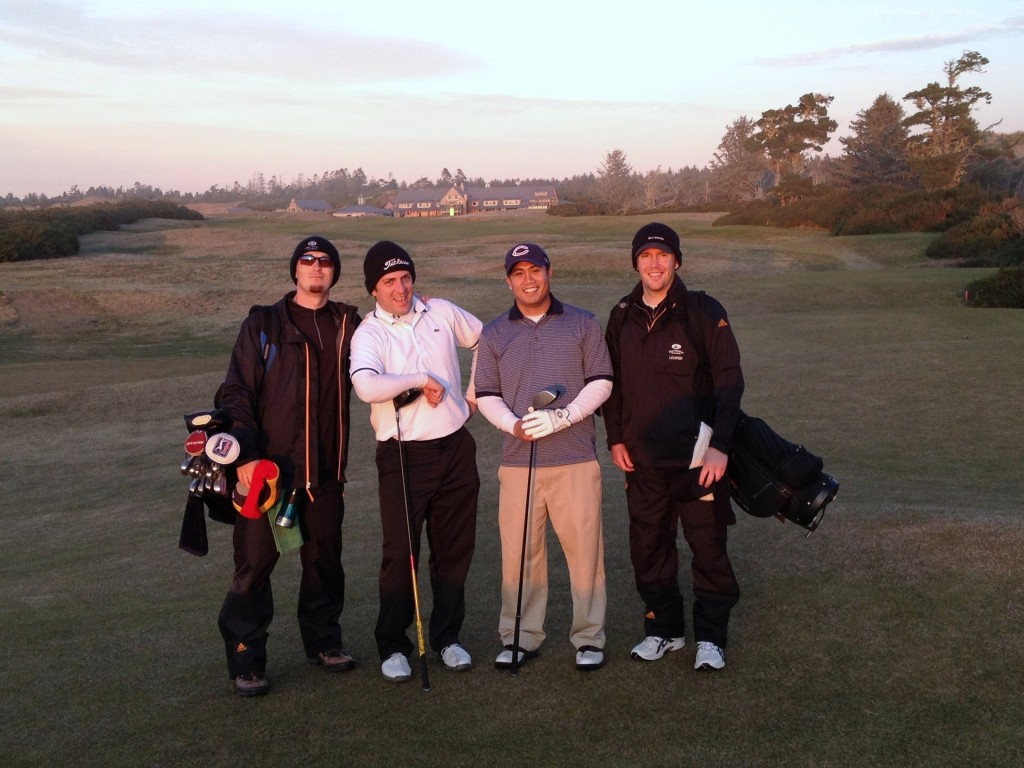This is Part II in a series of five posts chronicling my trip to Bandon Dunes Golf Resort from January 12-17, 2012. Read the other related posts here.
On the morning of Friday the 13th, my good friend Mark Martinez and I were ready for our first round of golf during our maiden voyage to Bandon Dunes Golf Resort. After spending nearly two hours warming up at the practice center, Mark and I disembarked from the resort’s swift and friendly shuttle service and greeted the caddy master at approximately 12:15pm. We were ready for our “12:20pm” tee time until the caddy master informed us that our actual tee time was 11:20am. We were almost an hour past our slotted time. It so happens that in our excitement for the start of our round, we had both misread the time on our reservation sheets.
It was, however, to work in our favor. The starter and pro shop weren’t offended and seemed to understand the fact that we had been out working on our game at Bandon’s spacious practice center. The 12:20pm tee time, on which we had our minds set all along, was conveniently available and we were to be the last of the “commercial” golfers out on the course. We were informed that any golfers behind us during the round were staff members who are permitted to play until dark behind the last of the resort’s paying customers.
Near the first tee, we met our caddies. I was introduced to Richard Dillon, a native of Eugene, who now lives about 2 miles behind the back nine at Bandon Trails. He was relaxed and upbeat. Mark was paired with Alden Peterson, a jocular young looper, who runs a golf retail outlet in Salt Lake City the majority of the year while caddying at Bandon during the offseason.
The round started on a quirky but upbeat note when Mark badly topped a short iron approach on the 1st hole that nonetheless ran along the ground for 120 yards and stopped to about 15 feet of the pin. He made the putt center cut for birdie. It was an immediate glimpse of the sometimes helpful nature of links golf. Then again, there were plenty of opportunities later in our trip to see how punishing links golf can also be.
In the ever-present spirit of camaraderie that pervades Bandon Dunes and the game of golf, we let a single golfer who had caught up to us join our group. The pace of play had slowed and it seemed only fair. We were introduced to Bob, an older gentleman from Corvallis who had driven down to the resort with his wife earlier in the day. He scheduled a late afternoon round while she read in the Lodge. We ran into Bob and his wife after the round over drinks at the Tufted Puffin Lounge where Mark and she discovered they were both alumni of UC Davis.
Several months prior to arriving at Bandon, I read fellow A Position editor, Stephen Goodwin’s, excellent book Dream Golf: The Making of Bandon Dunes. It provided a terrific preface to the history and personalities behind the courses’ different design teams and their aesthetic approach to each project. The book’s material gave me a helpful background on David McLay Kidd’s design philosophy with Bandon Dunes, but a book can only tell you so much. As any golfer knows, a course must be played, experienced, and felt more than mere words can convey.
I am not without criticism of the course. I did find the opening and closing holes to be lacking. They didn’t inspire the same imagination, scenery, or playing strategies as the many other holes on the course. I also found the slope rating of 139 to be far too high. Not a knock on the course, but the course raters need to reexamine the difficulty level. Many other golfers agreed with me that this was the most playable of the four courses in terms of all skill levels.
What little gripes I may have had were overcome by some truly stunning holes on the back nine. I thought the Par 3 12th (incidentally, the first hole ever built on the entire property) was a cleverly composed hole with nice balance–it features a natural rock formation to the right of the green juxtaposed by a deep greenside bunker to the left. I ended up hitting into both when I played the hole.
When we approached the Par 3 15th, the round seemed to get very quiet. The wind calmed, our pace slackened, and a deep sense of gratitude for the day’s wonderful conditions permeated the group. As we approached the tee, my immediate thought was “painting”: Several distinct color fields define the hole’s composition. From the teeing area, with the angle of the late afternoon sun, the golfer’s eye captures a kaleidoscope of color: brown to green to gray to blue to white. Off in the distance, a red flag sitting upon a vertical flagstick pierces the horizon. It struck me as a scene Monet might like to have painted.
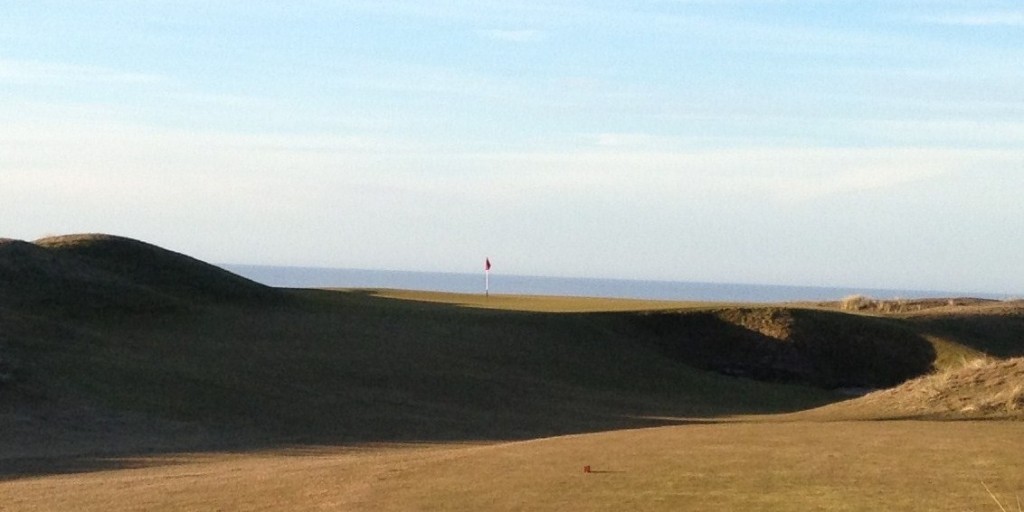
-
The 15th at Bandon Dunes is a one-shot work of art. The Impressionistic composition of the hole is unmistakable.
I also very much enjoyed the Par 4 16th, a 363-yard hole crossing a gorse-laden cavern to double fairways. In a twist on the horizontal features of 15, the golfer’s vision on 16 is presented with diagonal lines of play. In the distance, on the top of the hill, and exposed green awaits your approach shot. The hole is imaginative, playable, and challenging all at the same time. The 15th and 16th were the crescendo of our round of golf at Bandon Dunes. Upon finishing them, I silently thanked Mr. Kidd for his work on such wonderful stretch of Pacific coastline.
As we approached the 18th tee and prepared to conclude our round, the smiles on the faces of Mark and myself said it all. We were about to finish our very first round of golf at Bandon Dunes. The weather was spectacular, we played loose, shared stories, met some good caddies, and had the sun set behind the endlessly rolling waves of the Oregon coast during our finishing holes. While I did feel that the 18th was a bit anticlimatic from a golf standpoint, it did provide the welcoming sight of the Lodge in plain view. We knew food, drink, and another three magical days were still to come.

